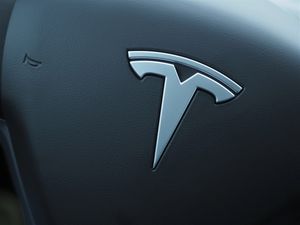It’s doubtful that investors who were blown away by the stock market’s first positive week since late March would be persuaded that the misery has ended.
Investors who were alarmed by the week leading up to Memorial Day may not be persuaded by the Dow Jones Industrial Average’s first positive week since March late last month.
What just transpired?
By reducing market expectations for future Federal Reserve rate rises, interest rates have fallen, and the yield premium investors want to acquire corporate bonds has tightened, according to Mahmood Noorani, creator of Quant Insight. Bounces were permitted.
This week, the index gained 6.6 percent, closing Friday 13.3% behind its early January top after breaking a seven-week losing skid. It also saw an increase of 6.8%. However, even though the Nasdaq Composite is still in bear market territory, it ended a streak of seven weekly losses by rising 6.8%. The DJIA, +1.76 percent, ended its worst losing streak since 1932 with a 6.8 percent gain.
Some positive causes, such as the significant drop in the US dollar and severely oversold technical circumstances, and highly pessimistic attitude, were cited by Kevin Dempster of Renaissance Macro Research. However, Nvidia Corp. NVDA, +5.38 percent, was an exception, despite poor news.
Even if neither Noorani nor Dempster is ready to announce a market bottom, there is no shortage of openly pessimistic estimates to back up their claims. Scion Asset Management founder Michael Burry made headlines when he stated in a now-deleted tweet that the 2008 market crisis had some similarities to the collapse of the U.S. housing market, as detailed in Michael Lewis’ book The Big Short.
When asked about the potential of an economic recession on Friday, he said, “I don’t know.” As recently as May, retailers Target and Walmart posted disappointing results, prompting the stock market to plummet even more due to fears that inflation pressures were starting to harm corporate profit margins.
According to Noorani, additional drops in actual rates might lead to higher stock prices in the short future, but he believes that yields have not yet peaked. The Fed’s favorite inflation barometer, the core personal consumption expenditure index, showed a slowdown on Friday, but bringing pricing pressures under control is still a work in progress, according to Mr. Cooper.
The task has been left undone due to the lack of clarity around the ultimate height of the federal funds rate. S&P 500 hasn’t formally declared a bear market, but analysts have long considered it such, citing the 2022 selloff’s bearish behavior as evidence.
A recent surge in consumer discretionary equities’ relative performance isn’t as dramatic as it first seems, according to Dempster. RenMac suggested that the rebound was more of an oversold bounce than a bottom and that he would be more hopeful if economic growth had been slower and inflation had peaked.
The post Why the Dow Finally Bounced — And What It Will Take to Proof That It Is Real appeared first on Best Stocks.





